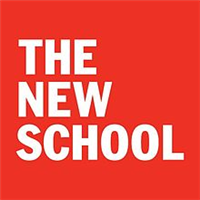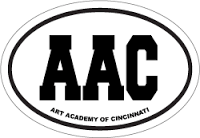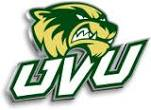What do they do?
Design or create graphics to meet specific commercial or promotional needs, such as packaging, displays, or logos. May use a variety of mediums to achieve artistic or decorative effects.
Also known as:
Artist, Brand Designer, Designer, Graphic Artist, Graphic Design Coordinator, Graphic Designer, Online Producer, Production Artist, Publications Designer, Technical Illustrator, Visual Designer
-
-1.2%
Change
Ranks #62 in job growth rate810Job Openings
Ranks #12 in net job growth
-
The New School
New York, NY
-
Rochester Institute of Technology
Rochester, NY
-
The Modern College of Design
Kettering, OH
-
Maranatha Baptist University
Watertown, WI
-
Lynn University
Boca Raton, FL
Looking for colleges that offer a specific major? Use the College Match Tool to find your best-matched schools and discover your estimated Net Price!
- Doctorate or Professional Degree (1%)
- Master's degree (7%)
- Bachelor's degree (60%)
- Associate's degree (12%)
- Some college, no degree (13%)
- High school diploma equivalent (6%)
- Less than high school diploma (1%)
Most Popular Majors that prepare Graphic Designers
-
#1
-
Degrees Granted
1,913
-
Female Students
1,171
-
Male Students
742
-
Median Starting Salary
$41,200
-
-
#2
-
Degrees Granted
1,413
-
Female Students
885
-
Male Students
528
-
Median Starting Salary
$45,300
-
-
#3
-
Degrees Granted
1,297
-
Female Students
567
-
Male Students
730
-
Median Starting Salary
$42,300
-
-
#4
-
Degrees Granted
991
-
Female Students
615
-
Male Students
376
-
Median Starting Salary
$45,300
-
-
#5
-
Degrees Granted
577
-
Female Students
313
-
Male Students
264
-
Median Starting Salary
$42,300
-
People in this career often have these skills:
- Active Listening - Giving full attention to what other people are saying, taking time to understand the points being made, asking questions as appropriate, and not interrupting at inappropriate times.
- Speaking - Talking to others to convey information effectively.
People in this career often know a lot about:
- Design - Knowledge of design techniques, tools, and principles involved in production of precision technical plans, blueprints, drawings, and models.
- Computers and Electronics - Knowledge of circuit boards, processors, chips, electronic equipment, and computer hardware and software, including applications and programming.
- Fine Arts - Knowledge of the theory and techniques required to compose, produce, and perform works of music, dance, visual arts, drama, and sculpture.
- Communications and Media - Knowledge of media production, communication, and dissemination techniques and methods. This includes alternative ways to inform and entertain via written, oral, and visual media.
- English Language - Knowledge of the structure and content of the English language including the meaning and spelling of words, rules of composition, and grammar.
- Sales and Marketing - Knowledge of principles and methods for showing, promoting, and selling products or services. This includes marketing strategy and tactics, product demonstration, sales techniques, and sales control systems.
- Customer and Personal Service - Knowledge of principles and processes for providing customer and personal services. This includes customer needs assessment, meeting quality standards for services, and evaluation of customer satisfaction.
People in this career often have talent in:
- Originality - The ability to come up with unusual or clever ideas about a given topic or situation, or to develop creative ways to solve a problem.
- Fluency of Ideas - The ability to come up with a number of ideas about a topic (the number of ideas is important, not their quality, correctness, or creativity).
- Near Vision - The ability to see details at close range (within a few feet of the observer).
- Written Comprehension - The ability to read and understand information and ideas presented in writing.
- Oral Comprehension - The ability to listen to and understand information and ideas presented through spoken words and sentences.
- Oral Expression - The ability to communicate information and ideas in speaking so others will understand.
- Written Expression - The ability to communicate information and ideas in writing so others will understand.
People in this career often do these activities:
- Design layout of art or product exhibits, displays, or promotional materials.
- Review art or design materials.
- Collaborate with others to develop or refine designs.
- Design layouts for print publications.
- Create computer-generated graphics or animation.
- Operate photographic developing or print production equipment.
- Perform administrative or clerical tasks.
- Confer with clients to determine needs.
- Conduct market research.
- Collect data about customer needs.
- Conduct research to inform art, designs, or other work.
- Draw detailed or technical illustrations.
- Maintain records, documents, or other files.
- Research new technologies.
- Operate still or video cameras or related equipment.
- Edit written materials.
- Write advertising or promotional material.
This page includes data from:

 Occupation statistics: USDOL U.S. Bureau of Labor Statistics Occupational Employment Statistics
Occupation statistics: USDOL U.S. Bureau of Labor Statistics Occupational Employment Statistics









